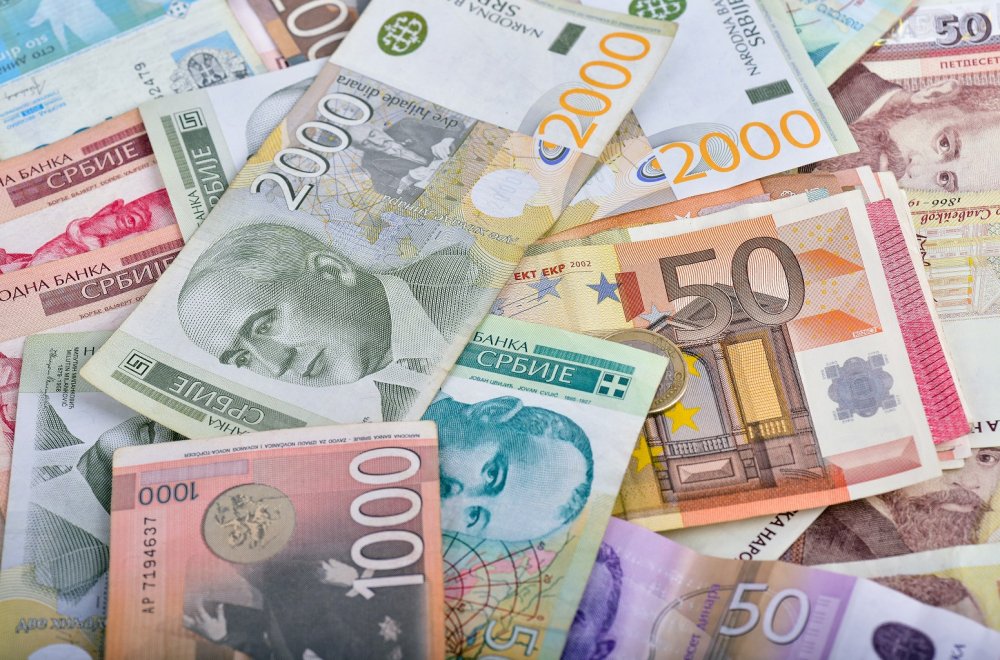In the first half of 2025, savings in Serbian dinars increased by 4.5 billion dinars (2.4%), reaching 195.7 billion dinars at the end of June. Growth was also recorded in foreign currency savings, which rose by 313.0 million euros (2.0%), according to the National Bank of Serbia (NBS).
By the end of July, dinar savings had exceeded 200.0 billion dinars, while foreign currency savings approached 16.0 billion euros, the highest levels recorded so far. Dinar savings also came close to accounting for 10.0% of total savings in domestic banks, a significant increase compared to the end of 2012, when their share was below 2.0%.
According to the latest semi-annual analysis of the profitability of dinars versus foreign currency savings, covering the period from June 2012 to June 2025, it has been more profitable to save in the local currency throughout the past thirteen years, regardless of the savings term.
Higher Profitability of Dinar Savings – Analysis Results
The analysis simulated placing 100,000 dinars in a one-year term deposit in June 2012 and renewing it annually for thirteen years. By June 2025, the depositor would have earned nearly 58,000 dinars more (approximately 500 euros) than someone who deposited the equivalent amount in euros over the same period (based on the average dinar–euro exchange rate at maturity).
Similarly, one-year dinar deposits that were not renewed over the past thirteen years proved more profitable than euro deposits in almost 99% of the observed annual sub-periods (143 out of 145).
A saver who deposited 100,000 dinars in June 2024 would, by June 2025, have earned over 1,800 dinars more than someone who placed the same amount in euros during that time.
Three-month dinar deposits proved more profitable than equivalent euro deposits in almost 92% of sub-periods, while two-year dinar deposits outperformed euro deposits in all observed sub-periods.
These results confirm that over the past thirteen years, saving in the domestic currency has consistently yielded better returns, regardless of the term.
Why Was Dinar Saving More Profitable?
Key factors included:
- Higher interest rates on dinar deposits compared to euro deposits.
- Favorable tax treatment of interest earned on savings in domestic currency.
- Macroeconomic stability, including the preservation of financial stability and relative stability of the dinar–euro exchange rate.
Growth of Dinar and Foreign Currency Savings
Over the past thirteen years, dinar savings have increased more than elevenfold. Their share of total savings rose from 1.89% in June 2012 to 9.61% in June 2025.
In the first half of 2025, short-term dinar deposits (maturities up to six months) increased, while longer-term deposits declined. The strongest growth was in deposits maturing in three to six months (+6.3 billion dinars). Deposits maturing in six to twelve months fell slightly (-1.0 billion dinars) but still represented the largest share of dinar savings (51.9%). The average dinar deposit at the end of June 2025 was 191,000 dinars.
In the same thirteen-year period, foreign currency savings grew by 7.8 billion euros, almost doubling. In the first half of 2025 alone, growth was driven largely by demand deposits (+346.8 million euros, 66.5% of total foreign currency savings) and six-to-twelve-month term deposits (+223.3 million euros). The average foreign currency deposit at the end of June 2025 was 4,063.4 euros.







